Human Sweat Under Microscope
Image Gallery
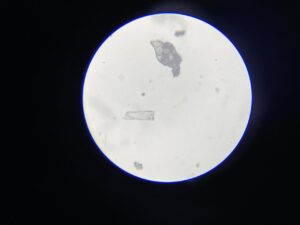


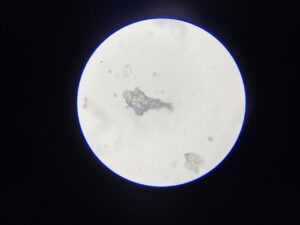
Videos

Description
There are irregularly shaped crystalline or solid residues, which are likely salt crystals, predominantly sodium chloride, formed as the sweat droplet dried on the slide. One of the larger fragments on the left side appears dendritic or branched in structure, suggesting it could be a crystallized mineral component formed through slow evaporation. In the central area, there is a rectangular or cubic structure which may represent a more uniform salt crystal. Toward the lower right, a rounded structure with concentric ring-like patterns is visible, possibly indicating organic residue or dried proteinaceous material like urea or amino acids. Scattered throughout the field are small particles and granules, possibly skin debris, environmental dust, or microdroplets of lipids or oils. The background remains relatively clear, indicating that the sample was not heavily contaminated and was probably a single dried droplet. Overall, the image illustrates typical crystallization and residue patterns seen when sweat dries on a clean surface, highlighting both inorganic salts and organic traces.
Equipment
Binocular Microscope
Magnification
100x and 400x
Staining Technique
None
Sourav Pan (2025). Human Sweat Under Microscope. Biology Notes Online. Retrieved 30/11/2025 from https://biologynotesonline.com/community-image/human-sweat-under-microscope/
Helpful: 100%
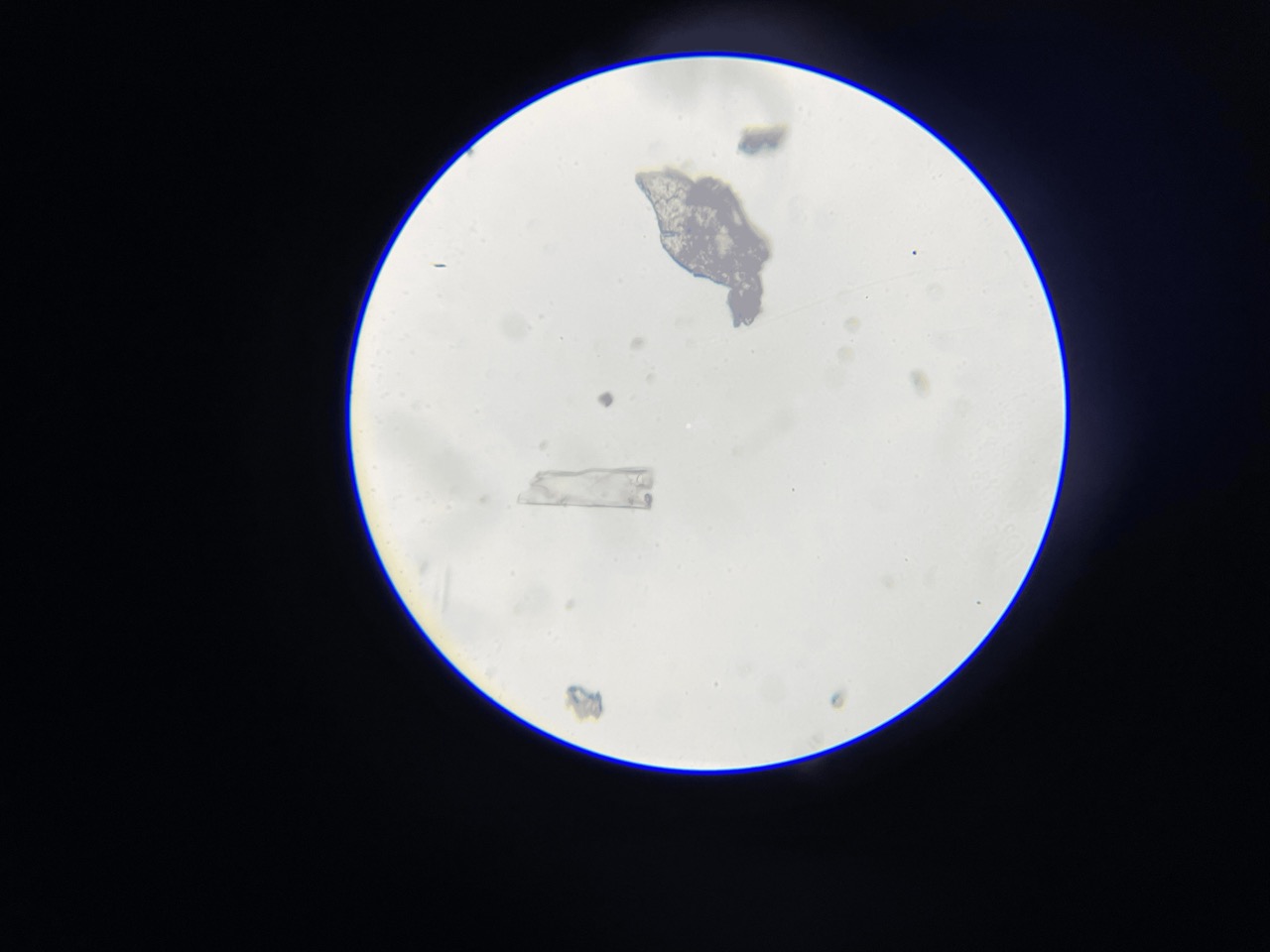
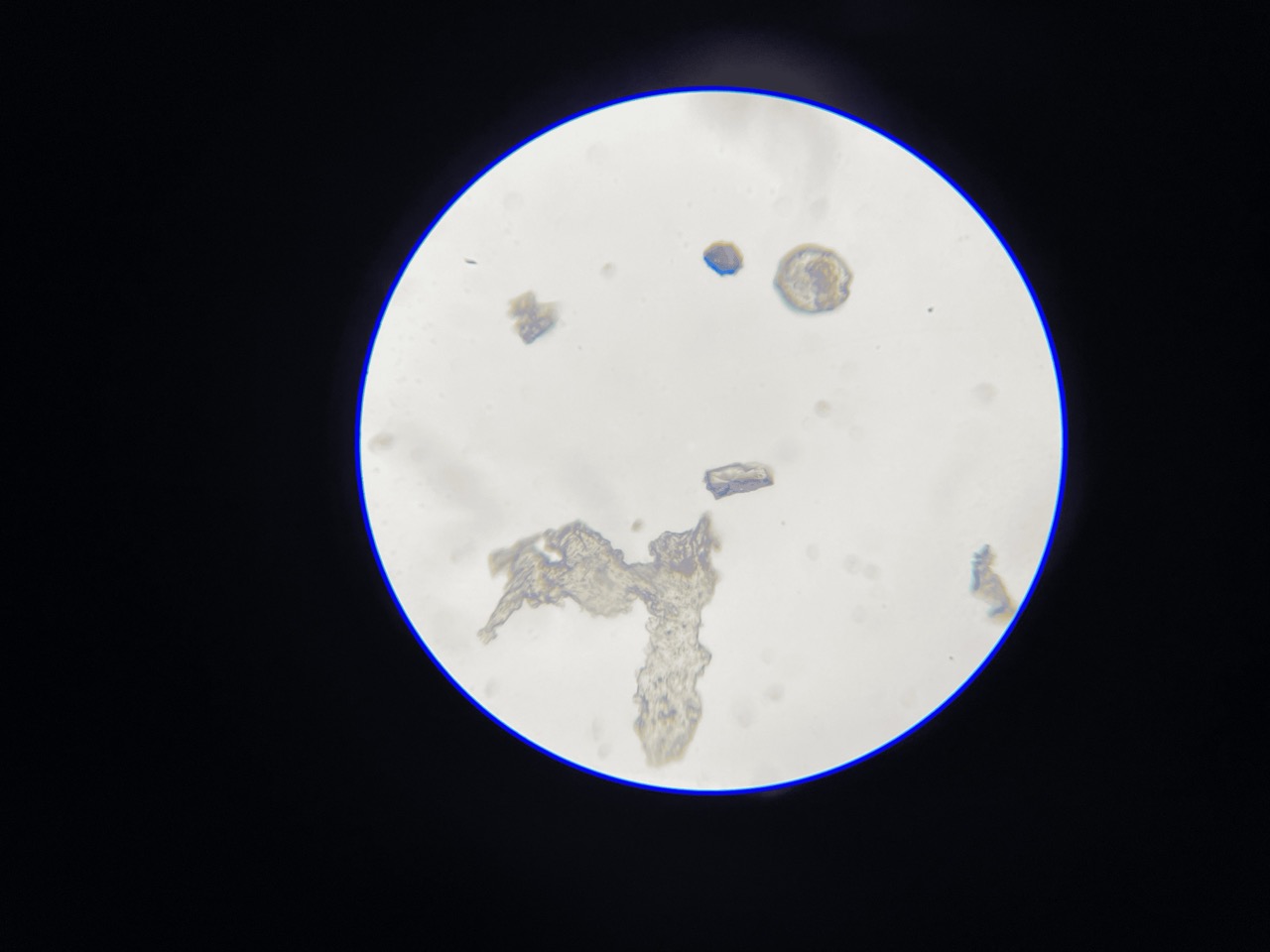

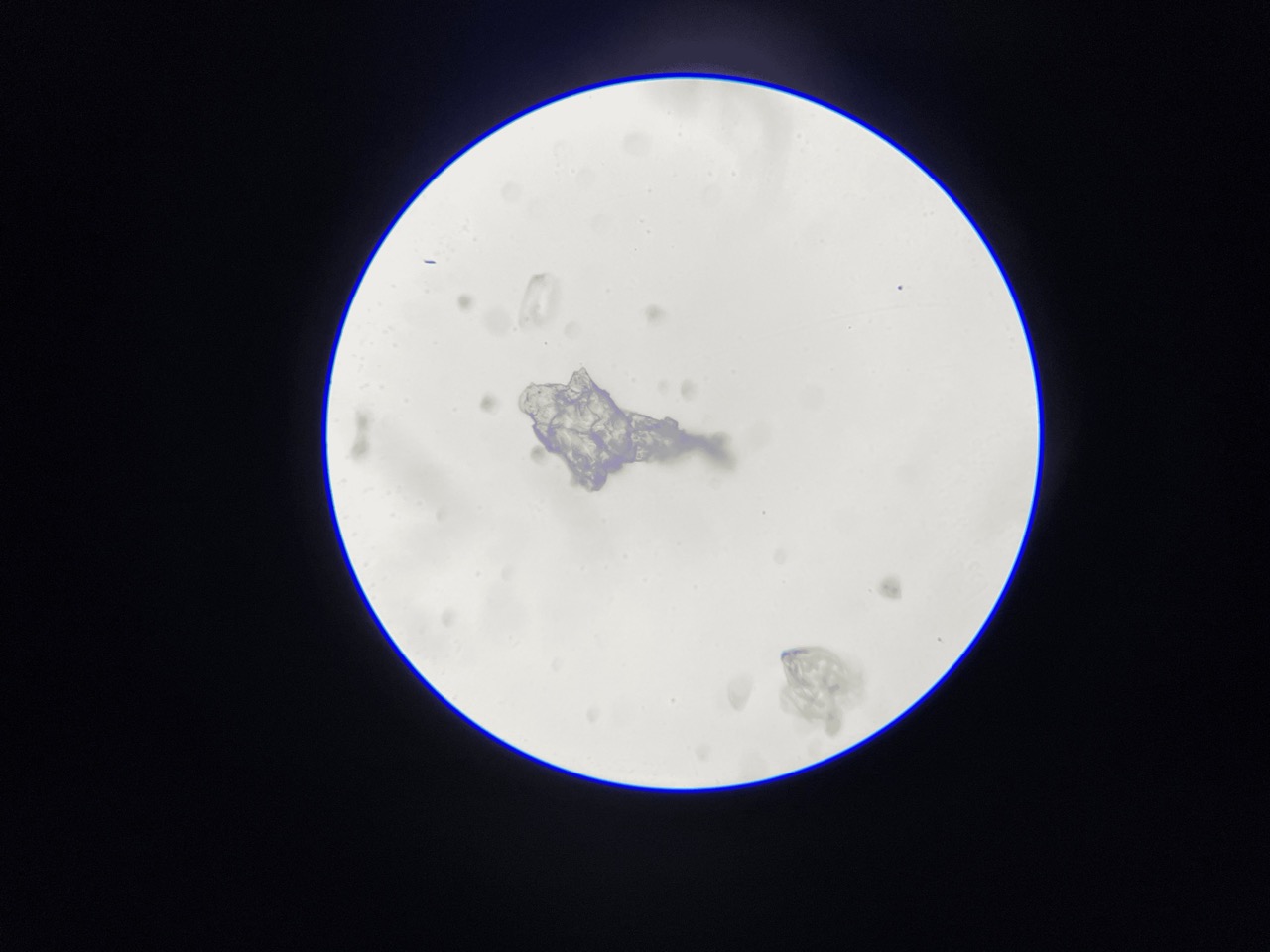
- Text Highlighting: Select any text in the post content to highlight it
- Text Annotation: Select text and add comments with annotations
- Comment Management: Edit or delete your own comments
- Highlight Management: Remove your own highlights
How to use: Simply select any text in the post content above, and you'll see annotation options. Login here or create an account to get started.